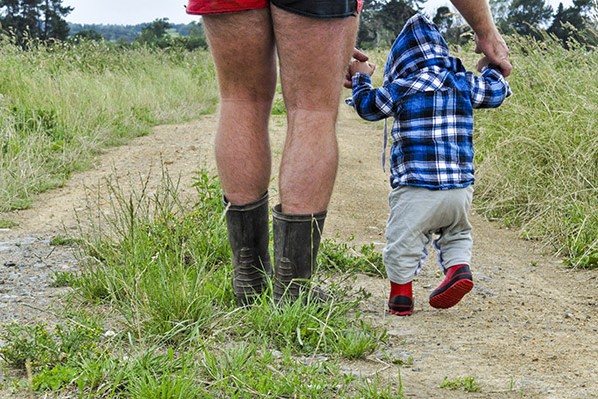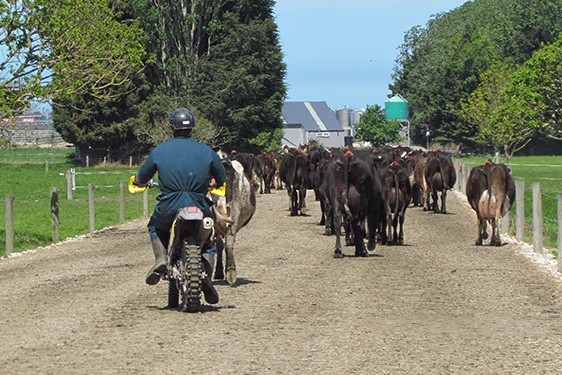By Glenys Christian
DairyNZ’s health pitstops show 12% of dairy farmers are suffering from burnout and double that number report exhaustion. Around one third have problems sleeping.
But this may well be just the tip of the iceberg, farmers told DairyNZ business developer, Maitland Manning, at a recent Waikato discussion group.
“It’s highly likely you could double some of those figures,” one said.
This might not be a permanent situation but more a case of how long farmers could put up with, for example, having sleeping problems.
“The worst thing is sitting at home and getting more and more worked up.”
And then there are the Rural Health Association of New Zealand’s figures showing an average of 23 farm-related suicides occurring each year, or nearly one a fortnight.
Manning was trialling a wellbeing pilot DairyNZ plans to roll out later in the year after receiving farmer feedback.
The key, as he sees it, is to first get dairy farmers talking about wellbeing and mental health, what those terms mean and more particularly what they meant to them.
“It’s an uncomfortable topic and not usually something that we would talk about,” he said.
“It’s seen as a stigma in society to be talking about mental health because we don’t talk about how we feel.”
That was a lot to do with the problem, which led to people feeling they should harden up rather than sharing their
feelings of stress or worry which were stopping them from enjoying life.
“The more stressed you get the more you have tunnel vision,” he said.
“Start thinking about yourself and what you have to keep your mental health on target.”
A FarmStrong survey showed just 10% of farmers would generally ask for help while 90% would step in to assist others in a similar position.
“Life is getting a lot more complicated,” he said.
“We’ve seen the effect of new environmental regulations, where, for example, farmers in the Hinds area in Canterbury are having to eventually achieve a 30% reduction in their nitrogen leaching.”
Weather-related stress was common and could also occur at busy times of year, such as calving, or through loneliness.
There were also greater pressures on young people, who dealt with a lot more information than previous generations had had to, as well as more pressure to be socially acceptable.
And more barriers were being put in the way of farmers getting help, as they often had to travel further to their doctor or to social functions, leading to greater isolation.
Increasingly they might look to support from the only people who were coming on to their farm regularly, such as rural servicing company representatives.
“Look at where farming has come in the last 20 years,” Manning said. “It was cows and grass. Complication and choice make things difficult. There are a lot more pressures but there are a lot more resources as well.”
Both challenges and resources were necessary.
“We all need them in life because if there are too many resources there can be boredom.”
He asked farmers what they looked to in their lives to support them. Some suggestions were good health, a reliable labour pool, social interaction, allowing them the chance to get away from the
farm, and a good pay out meaning the farming operation would return a profit. Overseas research showed big differences when companies placed an emphasis on good mental health.
Where they didn’t there was twice the sick leave and conflict amongst workers. Physical symptoms included three times the levels of cardiovascular issues and reports of back pain and two to three times the injury levels while at work.
‘Complication and choice make things difficult. There are a lot more pressures but there are a lot more resources as well.’
The result was these companies had a high turnover of staff, due not only to the way individuals were feeling but their effect on other staff members.
But where good mental health was prioritised there was 31% higher productivity and 37% more sales achieved.
Creativity was lifted by three times, and workers had increased satisfaction, giving their company a reputation as a good place to work. Life was more enjoyable for them.
“Getting farmers to look at the issues and write down a plan to deal with them is the most difficult thing to do,” he said.
He asked farmers at the discussion group to choose one challenge they had control over, describe it and write down what they could do to change it.
“You are getting off-farm so you are doing better than most,” he said.
Drawing up a Challenge Action Plan involved writing down what the challenge was and why it was causing stress. Then farmers needed to list what they could change, because they had control over it, over the next two weeks to one month.
The next step was the outcome, or looking at what would change after the plan was complete, and the final move, actions which needed to be taken to meet the goal.
His closing words to farmers were to think about who wasn’t at the discussion group.
“Who would benefit from this sort of help?” he asked.
“Who would benefit from you going up their drive and asking them if they’re okay?”
DairyNZ wellbeing programme has found it often took four people asking someone if they needed help before they would say they did, Manning said. “You could be that fourth person.”





